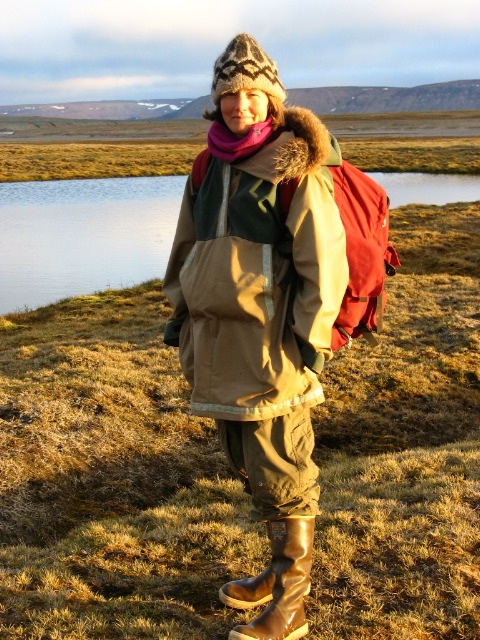The goals of this project are:
- to characterize the spatial and temporal seasonality of tundra vegetation of the circumpolar Arctic in relation to ice-ocean, atmospheric, and land characteristics
- to understand the seasonal linkages between the marine environment, the atmosphere, and the terrestrial ecosystems of the Arctic, and
- to examine the effects of seasonality changes in terrestrial vegetation on Arctic carbon dynamics.
The project is divided into the three broad components:
Component 1: Circumpolar seasonality characterization. Our earlier work examined interannual trends of vegetation greenness, land-surface temperatures, and sea-ice concentrations. In the proposed work, we will focus on the seasonal variability of these same factors plus several other land and sea variables along east-west and north-south gradients within the Arctic.
Component 2: Atmosphere and ocean controls of terrestrial seasonality. Our research will focus on analyzing the seasonal NDVI patterns in relation to characteristics of the near-shore ocean and sea-ice environment, atmospheric circulation, regional winds, and land characteristics. We will devote particular attention to the climate mechanisms behind the striking contrast between the vegetation response to declining sea ice in Berengia and west-central Eurasia by examining the seasonality of the atmosphere and marine systems in the 50-km coastal zone in these regions.
Component 3: Land energy and carbon linkages. One method for assessing the effects of changing vegetation seasonality on carbon budgets is to use phenomenological relationships that exist between remotely-sensed indices of vegetation and field observations of aboveground biomass.
Published relationships exist between the normalized difference vegetation index (NDVI) and the biomass of aboveground vegetation (or some components of aboveground vegetation) for arctic tundra ecosystems (Hope et al. 1993, Boelman et al 2003, 2005, Reidel et al. 2005). Epstein additionally has an extensive dataset of NDVI and aboveground vegetation biomass (manuscript in prep.) collected from sites throughout the Arctic of both North America (Epstein et al. 2008) and Russia, including data from all five of the arctic bioclimate subzones (Subzones A-E; sensu Walker et al. 2005). Growing season curves of the NDVI generated from satellite data (Component I) could thus be translated into growing season aboveground biomass curves, and the accumulation of carbon in aboveground tissue could be estimated. For an additional whole-season approach, the temporally-integrated (within a growing season) NDVI (TI-NDVI) has been related to the peak season aboveground biomass (Jia et al. 2006), and these relationships could be used to assess interannual changes in the stocks of aboveground carbon.
The seasonal progression of arctic terrestrial biomass, and the timing and magnitude of peak biomass are changing. This change is not consistent across all tundra ecosystems, for reasons that are still unclear. Preliminary research indicates a potential link with the seasonality of nearby marine surface conditions, i.e., sea ice and upper ocean properties. We propose to perform both statistical and model-based analyses to better understand these important linkages. We follow this with a modeling analysis of the effects of changing vegetation seasonality on plant functional type composition and arctic terrestrial carbon accumulation (or loss). The results will be a synthetic view of changing seasonality across the land/ocean boundary of the Arctic Ocean.
Project Location
Journal Publications
Bhatt, U.S., D.A. Walker, M.K. Raynolds, J.C. Comiso, H.E. Epstein, G. Jia, R. Gens, J.E. Pinzon, C.J. Tucker, C.E. Tweedie & P.J. Webber (2010), "Circumpolar Arctic Tundra Vegetation Change is linked to Sea Ice Decline", Earth Interactions, 14, doi:10.1175/2010EI315.1. Download (PDF - 5.7 MB)
Dates
-Members
Lead Principal Investigator

Principal Investigator

Principal Investigator

Principal Investigator

Co-Principal Investigator

Co-Principal Investigator

